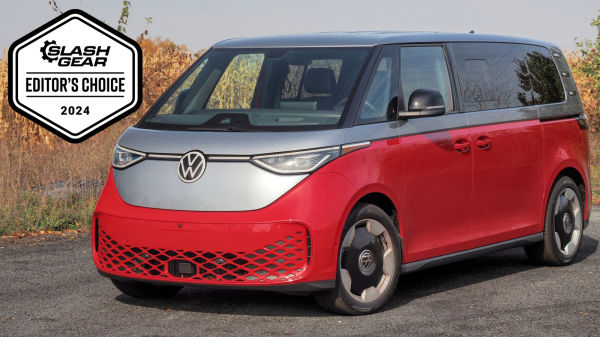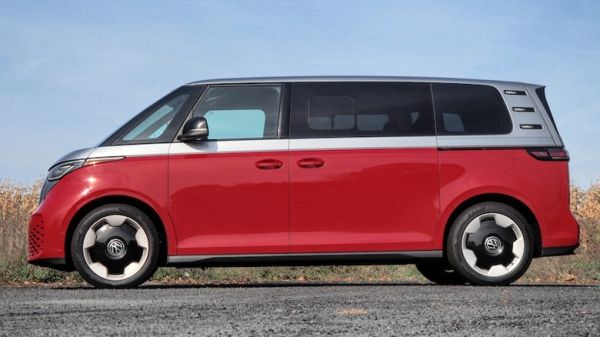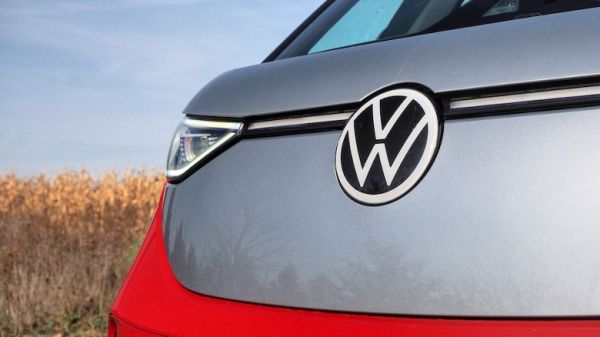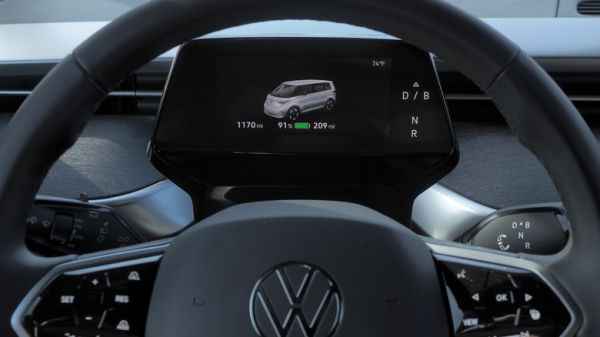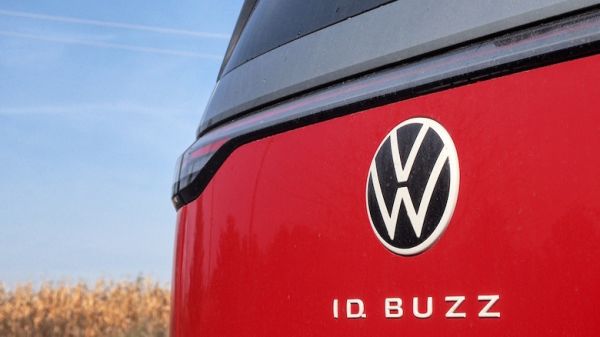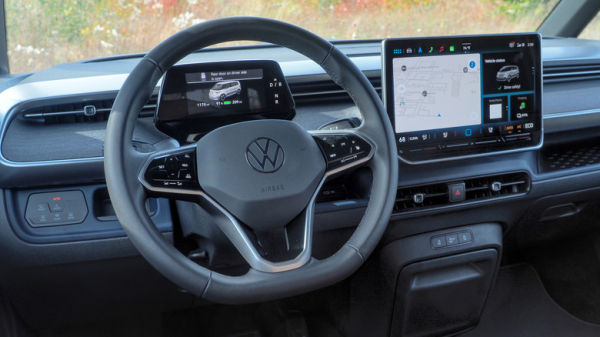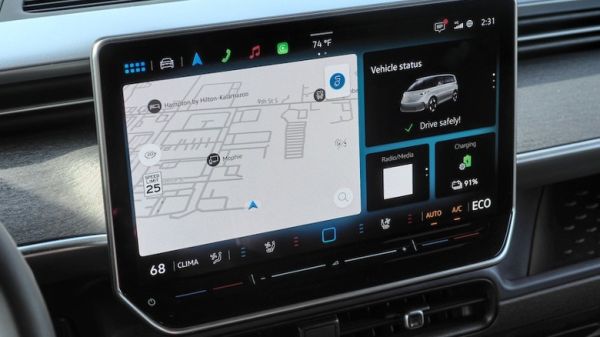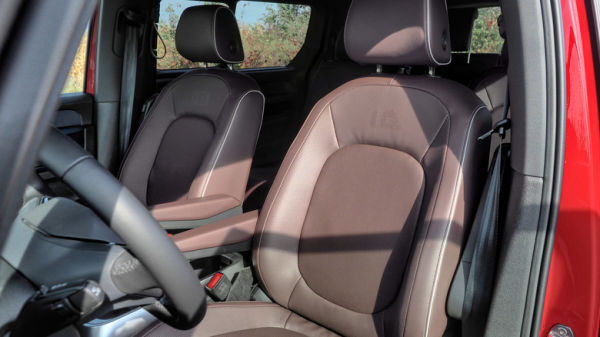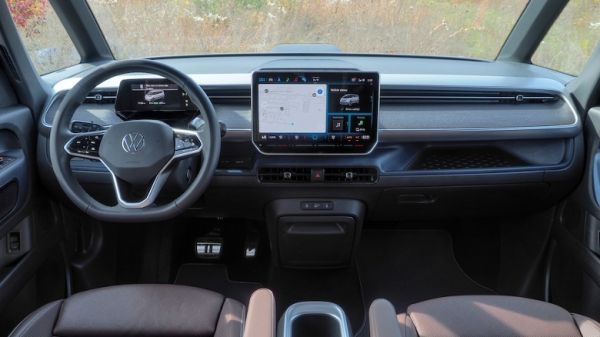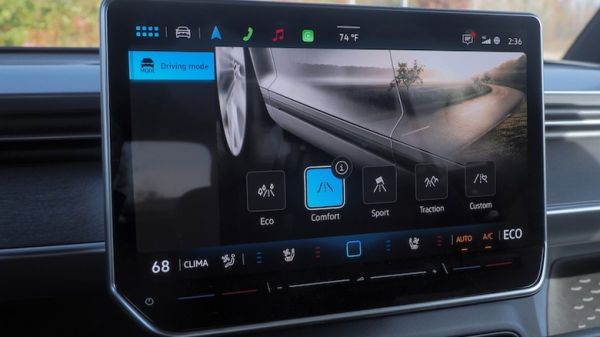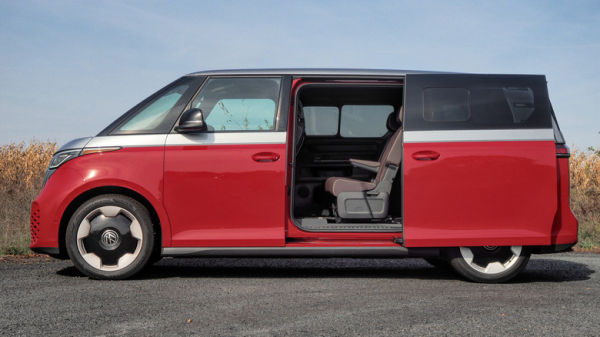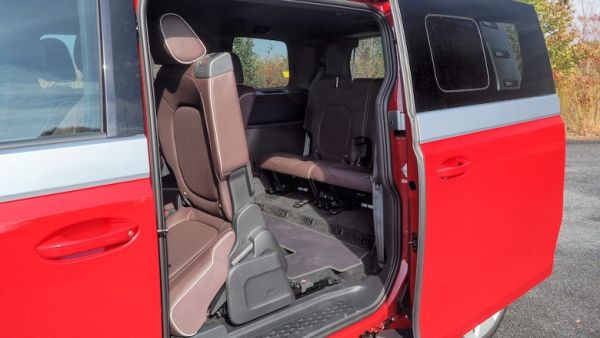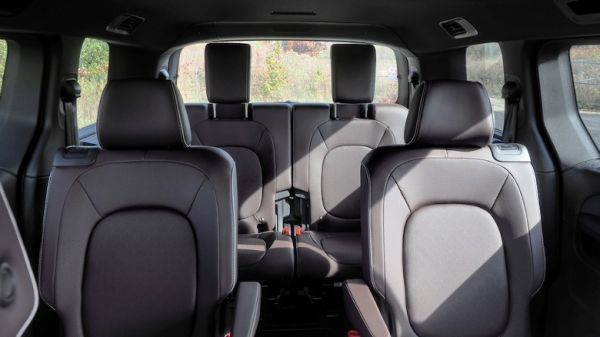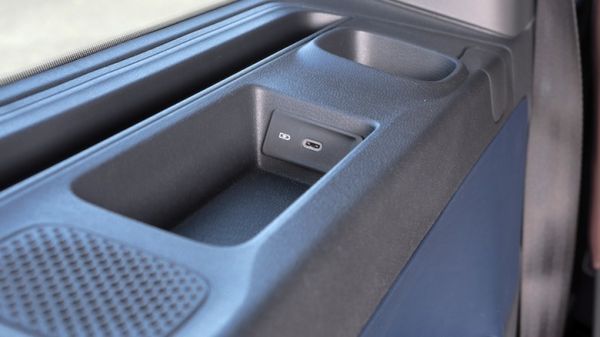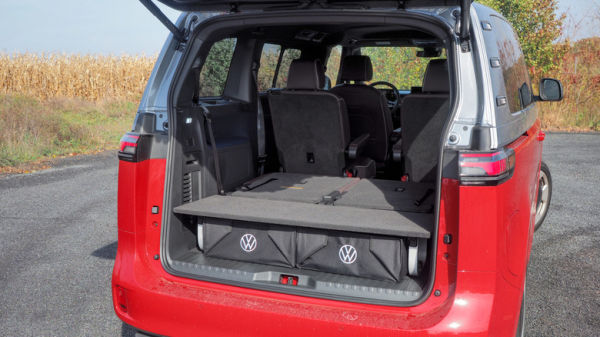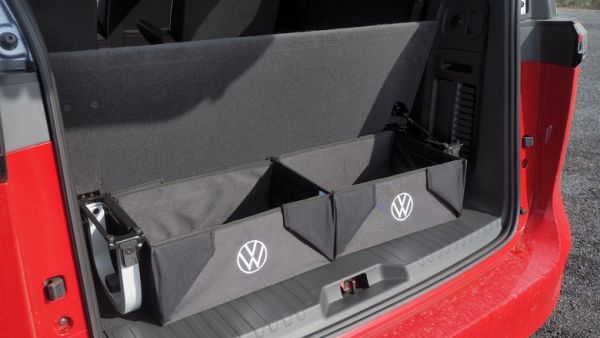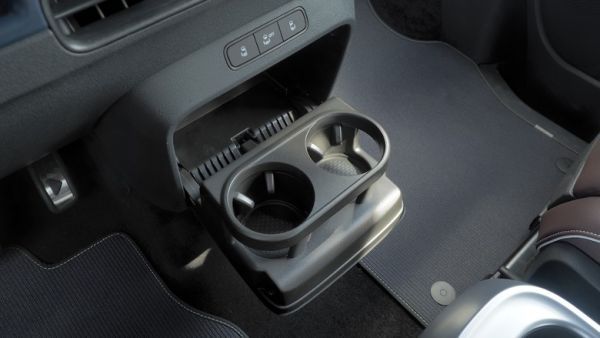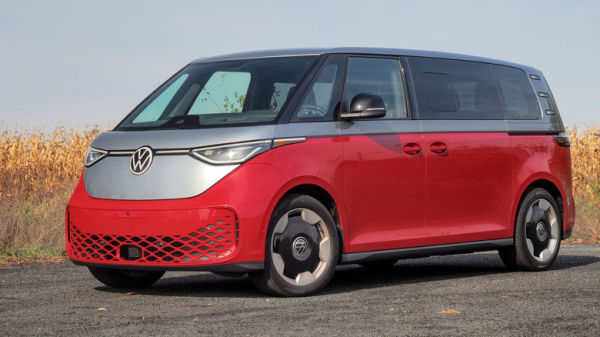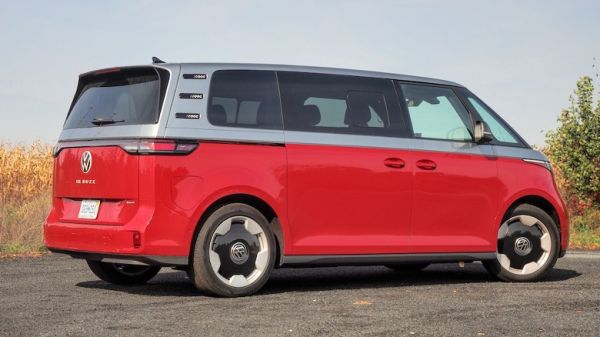RATING : 10 / 10
- Head-turning design prompts regular smiles
- Smooth EV drivetrain
- Capacious cabin
- Premium pricing
- Middling range
- Where’s the camper option, VW?
I wondered, at first, if the ID. Buzz had missed its moment. Nostalgia stacks up upon nostalgia, with the electric microbus. There’s the obvious nod to Volkswagen’s van heritage, and the bus that was so popular — and is now undeniably an icon — of the 60s and 70s. That’s instrumental to the EV’s positioning, as much a halo model for the automaker’s electric reinvention as a nameplate in its own right.
Advertisement
Less planned, though, is the nostalgia you might feel for our first glimpse of the ID. Buzz. Even if we ignore Volkswagen’s earlier “electric bus” concepts, the buzz around this Buzz has been simmering since early 2017. It took another five years before — later than planned — VW launched it in Europe.
Now, with 2025 fast approaching, it’s finally North America’s turn, only the electric vehicle segment has changed dramatically in the intervening years. The handful of EVs on sale when Volkswagen first teased its bus concept has flourished to models across almost all segments, and running the gamut on price. Meanwhile, the bubble also burst on over-ambitious transition goals for full electrification, and capable (though still gas-centric) hybrid minivans now offer flexibility with their frugality.
Advertisement
In short, cute alone just won’t cut it.
Heads will turn
Years of seeing the ID. Buzz on screens, or even at auto shows, doesn’t dim how astonishing it is to catch sight of the electric bus in the real world. Not since the Lexus LC, perhaps, have we seen something quite so effectively nail the transition from concept to production.
Advertisement
At 195 inches long — in U.S. spec long-wheelbase form — it’s actually a little shorter than a Volkswagen Atlas, and the same width at 78 inches. The 75 inch height (five inches taller than the Atlas) and boxy silhouette leaves it looking far larger, though, even making the sizable (and standard) 20-inch wheels look normal. Factor in VW’s admirable restraint when it comes to extraneous detailing, some slick lighting and animations, and the Cherry Red & Metro Silver dual-tone of this particular ID. Buzz Pro S Plus 4Motion, and there’s almost something Iron-Man-esque about it.
People point, and stare, and take photos, but most charmingly they smile. The ID. Buzz operates in a bubble of electron-powered whimsy, and it’s hard to be glum behind the wheel when people are grinning, flashing you two thumbs-up, or pointing the EV out to their kids so they make the Surprised Pikachu Meme face. It’s the sort of reception that Cybertruck owners are still bemused that they’re not getting.
Advertisement
One motor or two
So far, so halo. Yet the ID. Buzz can’t cruise on vibes and aura alone, and anybody hoping for a cheap retro experience will be disappointed. Pricing for the 2025 model year kicks off at $59,995 for the Pro S trim, while the Pro S Plus starts at $63,495. A first-year-only 1st Edition trim starts at $65,495; all are subject to $1,550 destination.
Advertisement
All three trims are rear-wheel drive by default, with a single electric motor bringing 282 horsepower and 413 lb-ft of torque. All-wheel drive is an option on the Pro S Plus and 1st Edition — it adds $4,500 to this Pro S Plus, taking it to $67,995 before the $995 paint and destination fee — with a second motor for the front wheels that pushes total system output to 335 hp. All versions get a 91 kWh battery, rated for 234 miles with RWD configurations, and 231 miles with AWD.
For juicing up at home, there’s an 11.2 kW AC charger. On the move, 200 kW DC fast charger support means a 10-80% top-up in about 26 minutes, VW says.
Odd looks but surprisingly familiar to drive
Despite the kooky looks, the ID. Buzz driving experience is going to feel familiar to anyone who has piloted a recent Volkswagen EV. Indeed, the main parts of the dashboard — complete with a small 5.3-inch display atop the steering column, twist-to-shift stalk for Drive/Neutral/Reverse, and a 12.9-inch infotainment touchscreen in the center — is carried over from the latest ID.4, albeit bolstered with plenty of extra nooks, storage bins, and USB-C ports. The moveable center console can be repositioned, but it’s fairly narrow.
Advertisement
The Pro S Plus trim gets a head-up display, too, while all trims have the somewhat confusing ID. Light color-changing bar that runs atop the dash and glows for things like navigation turn instructions and charging status. Sadly, VW’s decision to give the driver a single pair of electric window switches — that can flip between controlling front and rear glass — has also carried over. It’s all too easy to inadvertently fat-finger the “REAR” button when you’re aiming to open the windows instead.
Perky best describes the ID. Buzz on the road. With 335 horses to play with, and torque arriving instantaneously, it has that smooth surge of power that EVs are beloved for. On more than one occasion, I found myself whispering “Shinkansen” to myself, though only when there was nobody else around to hear me.
Advertisement
Smooth and simple, but range is only average
Still, this is a minivan that weighs more than 6,000 pounds, so set your pace expectations appropriately. In a straight line, there’s never a shortage of extra vim — though top speed is capped at 99 mph — and overtaking gawkers on the highway was easy. Firmly dialed-in suspension helps keep things decently compliant and reasonably tilt-free in the corners, but your natural inclination to self-preservation will probably have kicked in earlier and encouraged you to slow down before turns arrive.
Advertisement
VW keeps the powertrain options simple. There’s a regular Drive mode, and a “B” setting which cranks up the regenerative braking. I wouldn’t argue with even more aggression there, but it means most urban driving can be done with one pedal alone. There are Sport and Eco drive modes, along with Normal, Traction, and Custom, but I didn’t notice a huge amount of difference in performance either way. The range remaining estimate ticked up 4-5 miles in Eco, and down by about the same amount in Sport.
The ID. Buzz’s range isn’t going to win any awards, but at least the estimates are fairly accurate. Around town in the AWD version, I saw 2.6-2.7 miles per kilowatt hour; based on roughly 86 kWh usable energy from the battery pack, that lands at around 228 miles from a full charge. On the highway, the weight of your right foot makes a big difference.
Advertisement
Cruising at 70 mph on the dot may see you get overtaken a fair amount, but it delivered around 2.6 mi/kWh; nudging up to 75 mph or over chopped that down to 2.2 mi/kWh. Factors like how many people are onboard, and the settings for the three-zone climate control, can also have a marked impact.
A big cabin with three adult-scale rows
The power steering is very light, and generally the ID. Buzz hides its heft well in maneuvering. Sadly the base trim doesn’t get the 360-degree camera (and a bump in camera quality wouldn’t go amiss, either). Although there’s a fair amount of distance between the driver and the lower edge of the windshield, the near-vertical bodywork and plenty of glazing meant I found positioning the van easier than most SUVs of similar scale.
Advertisement
Capacious describes the ID. Buzz’s cabin well, particularly if you’re carrying people. By default there’s seating for seven; the Pro S Plus offers second row captain’s chairs as an option on the RWD, and standard with AWD.
Covered in sturdy leatherette in three colors (the light colors look better, I think, but the dark brown is likely more practical) they tilt, slide, and fold, and all have LATCH car seat anchors. Headroom and legroom is plentiful across all three rows; this isn’t a minivan where the rearmost seats are only scaled for kids, and VW throws in USB-C charging back there too.
Access is supremely easy, with the sliding doors and forward-tipping second row seating. The tailgate is powered, too. With all rows up, there’s 18.6 cu-ft of storage, with VW’s Flexboard storage system adding a pull-up panel to reveal a pair of removable bins. Drop the third row and that expands to 75.5 cu-ft; maximum is 145.5 cu-ft, and there’s up to a 3,500 pound tow rating.
Advertisement
A modern-day icon, or another PT Cruiser?
What this isn’t, of course, is a camper. Much, it has to be said, to the disappointment of a fair number of people who asked me about the ID. Buzz (some of whom had an original microbus in their garage). With the seats all folded down you could fit a decent-sized air mattress back there — and staring at the sky through the optional panoramic glass roof with electrochroamatic dimming would certainly be a nice way to spend the night — but so far VW has been frustratingly pessimistic on any such possibilities, at least for the U.S. market.
Advertisement
The cynic in me wonders just how long the ID. Buzz’s halo will glow. Certainly, the red and silver electric bus garnered more attention than any supercar I’ve driven. I quickly learned to factor in conversation time wherever I went, expecting the grinning strangers full of questions about this concept-come-to-life. A surprising number already knew plenty about the ID. Buzz, I discovered, perhaps suggesting that Volkswagen’s delayed launch wasn’t such a setback as some worried.
Familiarity breeds apathy, however, and I’m curious how much exposure will be required before the ID. Buzz no longer provokes turned-heads, much less questions. Chrysler’s PT Cruiser comes to mind, as an example of how rapidly — in automotive terms, at least — something unspeakably cool can become passé or just plain embarrassing.
Advertisement
2025 VW ID. Buzz Verdict
Longevity of the ID. Buzz aside, there’s no denying that minivans and electrification seem like sterling bedfellows. The flat floor and spacious cabin, quiet and zippy drivetrain, and of course longstanding winners like sliding doors (which you can open and close from the VW’s key fob) only leave range as the potential headache. A 2025 Kia Carnival Hybrid, for instance, is cheaper than the ID. Buzz and — though not intended for electric-only driving — potentially does 600+ miles on a tank of gas.
Advertisement
Or there’s the Kia EV9, an all-electric SUV that has up to 280 miles of range in AWD form, though a less spacious cabin for passengers than the Volkswagen bus. Approached sensibly, the 2025 ID. Buzz only really adds up if you don’t mind paying for the privilege of its uniqueness, and have charging facilities to work around the shortfall in range compared to more mainstream EVs.
All true, no doubt, and yet specs on paper can’t capture the undeniable charm of the ID. Buzz, or the giddying sense of fun experienced from behind the wheel. It’s a personality-rich, dare I say addictive sort of fun. You can criticize the range, and the price, and how there’s a fair amount of hard plastic in the cabin, not enough physical buttons, and no camper option yet (damn you, VW), but you can’t accuse the ID. Buzz of being soulless.
Advertisement
“I really want to drive this minivan some more” is not a typical phrase heard among car enthusiasts. I laughed about that, as I made every excuse, conjured any chore, which let me justify another outing in my big, red & silver friend.



